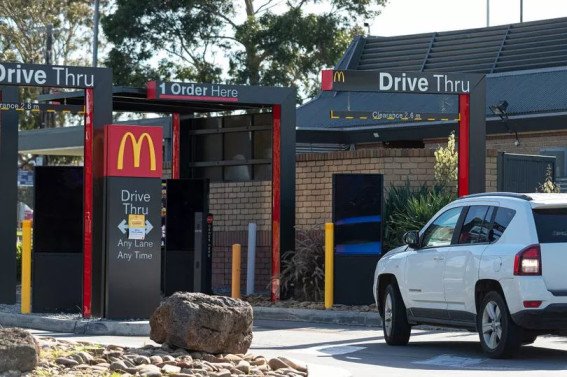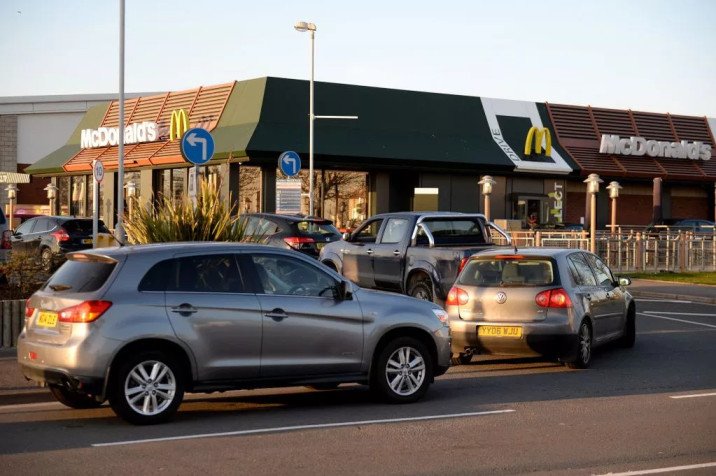Today, the fast food industry has become an integral part of a modern consumer’s daily life. Most of us have used a fast food drive-thru and know how crucial these services are for so many people. Daily, McDonald’s drive-thru lanes are serviced by an astonishing number of patrons. Recently, a viral controversy has come to light about some McDonald’s employees possibly failing to service customers who try to greet them at the drive-thru speaker. Although intriguing, at first glance this seems rude and unprofessional. However, the real explanation lies in the inner workings of a drive-thru system.
This article places drive-thru systems in context, explaining where the explosive allegations originated, considering employee and customer perspectives, and analyzing what this insight on etiquette in fast-casual dining reveals. This examination is necessary for every fast food consumer, service industry professional, and those interested in sociological trends in America that shape modern customer service sophistication.
The Drive-Thru Experience Overview
The Function of a Drive-Thru
From what we can gather, the drive-thru at McDonald’s is equipped with a multitude of timers, intercoms, display monitors, and sensors, all of which are aimed at increasing productivity. When a car approaches the drive-thru window, these sensors placed on the limbs of the car, will trigger the hiding system and start counting the time taken to serve the customers. After that, the intercom system opens up for interaction between a customer and a crew member.
Nonetheless, some of these functions operate with a delay. In case, customers try talking well before the microphone is switched on and the operators are in a rush to serve other customers, there may also be a chance that customers are talking to crew members who are in the process of servicing other customers.
What Goes on When the Customers are Engaged in their Activities
Some employees multitask by managing different payment and food preparation stations, while watching the drive-through timer display. If helpers have their hands full for the first answer to the question welcome, they glance towards the new order screen, which is activated automatically when a new car pulls in alongside the speaker.
Even in systems with two order lanes, the first customers to speak are tended to first. If the customer works of speaking without waiting for the equipment to be activated, this means the attendant loses the chance to help the customer.
The Viral Claim: Where It Began
Social Media as a Catalyst
The fire caught ablaze when a Tik Toker and a Reddit user, who identified themselves as a former McDonald’s employee, noted that there are customers who are “hi-ing” in a way that makes them seem like they are being ignored. Now, to the employee’s defense, this is not rudeness but simply how the cogs of the system works.
As of this moment, the statement stood on many social platforms and media statements subsequently went viral. Viewers, with an estimate of thousands, began to chime in with their perspectives, with some completely defending the employees while others began questioning some customer service norms. Mcdonald’s Worker Reveals Customers Who Greet Them May Be Ignored.
Similar Claims From Other Fast Food Workers Tiktok trending sound
This has without a doubt created a chain of astonishing replies where employees of other fast food establishments like Wendy’s, Taco Bell and BurgerKing began sharing their side of the story with the customer’s shout-out and voila. Many confirmed similar experiences with their own drive-thru systems. The conclusion was the same: there is so much technology embedded in the customer’s early greetings that take place that simply does not capture any response.
Realities of Drive-Thru Labor High Pressure and Time Constraints
Solo workers in charge of the drive-thru are under tremendous stress. All the franchises, in one way or another, operate under these norms to keep service standards. In addition to set expectations under specific periods, There are also vehicle passing quotas for every franchise. In other words, any form of backup, even from an early customer dials ‘greeting’ that displaces their rhythm, can spiral case into catastrophe.
Employees are trained to do multiple tasks at once: they are responsible for managing order confirmation screens, monitoring kitchen prep work, mobile app orders, and in some cases, managing two drive-thru lanes at once.
Training and Expectations
Training at McDonald’s and similar franchises usually includes instructions on how to properly prioritize tasks. An essential part is managing one customer at a time. Attempting to welcome the subsequent customer too early may cause confusion or mess up the order if their previous customer’s order isn’t completed. So, the silence that is heard after an early welcome is often a choice made in the interest of order accuracy.
Customer Perception vs. Operational Necessity
Communication Issues in a High-Speed Setting
Customers expect fast, yet friendly service. When they extend a greeting, only to be met with silence, it can be regarded as poor service. Without the relevant information, it is not difficult to view this scenario as being ignored or underestimated.
However, appreciating the sort of burden management puts on employees changes the entire narrative. Understanding the need to be quiet comes off as rude, but looking at it the other way paints a much clearer picture: this is about working efficiently.
The Psychology of Expectations
From a psychological standpoint, customers perceive greetings to be recognition and value. In the absence of such, they argue that they have been mistreated without disproving the claims made. Greater explanation by a firm like McDonald’s would go a long way in managing this discrepancy.

The Role of Technology
Delays Caused by Technology
Most modern drive-thru systems utilize one-way or toggle audio interfaces. If a customer does not activate the drive-thru speaker correctly, there is a risk of slowdown. Background chatter or sound may come through, however, the customer’s speech may not be able to reach the employee.
Consequences for Other Technologies
Other burger and fast-food chains are working to develop AI driven automated ordering systems. These technologies have the potential to detect phrases such as greetings and respond automatically so that the bewildering silence does not always be there. But as for now, both customers and employees need to bear with the out-of-date systems.
Tips for a Better Drive-Thru Appearance
Best practices for customers of the Drive-Thru are accurate to help ensure that the order is right:
- Allow The System To Elicit: When you pull up to the speaker, wait a few seconds and the employee should thank you for coming to the drive-thru.
- Do Not Cut Short: Don’t get too hangry, silence means you are being ignored.
- Speak with a Moderate Rate: Ensure you are given without repeating that order for understanding.
- Try Not To Over-Talk The Prompt: If you refrain from talking over the employees while they are speaking, you will avoid the off-course non-ideal conversation.
- When applicable, use the mobile ordering option: Helps ease the payment method through their phone thus reducing communication ambiguity with orders, removing time spent waiting at the serves.
Empathy on Both Sides
For Customers
Understanding that drive-thru attendants are multitasking within tight time frames can help instill empathy. A moment of courtesy can make the entire process easier for everyone.
For Employees
Although empathy for the customer is appreciated, courtesy and civility serve to improve service satisfaction. Simple words of acknowledgment, such as, “One moment please,” can improve communication.
Broader Industry Implications
The Balancing Act Between Speed and Service: Fast food restaurants are competing with each other to find and perfect ways to optimize the speed and quality of service they provide. The introduction of digital menu boards, AI systems for taking orders, and phone applications for placing orders mark the milestones of the so-called service evolution. It is just as important, however, for people to be involved.
Training for Situational Awareness
There should be a course designed for trained employees in which they are taught how to disarmingly respond to early customer greetings in a way that does not sacrifice efficiency. Franchises could benefit from developing scripts that timing customers while acknowledging them. Mcdonald’s Worker Reveals Customers Who Greet Them May Be Ignored.
Conclusion
The viral misconception that conveniently friendly McDonald’s workers at the drive-thru potentially ignores a greeting highlights a misconception between expectation and operational reality: one’s expectation of a simple, smooth drive-thru interaction is met with the harsh multi-layered, time-sensitive systems operating in the background. Instead of being labeled as inhospitable, the silence often heard is more accurately described as system delays, the need for switching focus, and training instructions emphasizing strict adherence to ticking clocks and task lists.
Understanding the mechanics of NH drive-thru logistics along with some willingness to practice approach-less patience allows for a more seamless, amiable, and, dare I say, respectful encounter. Fast-food companies hope to one day provide customers with the most precision-operated technologies, eliminating the spine-tingling experience of such solo-operational systems. A little pause, some empathy, and understanding can help improve the most familiar and typical eating experience in today’s world.
FAQs
Why don’t McDonald’s workers respond immediately when I say hello?
Either the drive-thru system is not on yet, or the worker is completing the last customer’s order. While it may appear rude, it is more a question of order and workflow.
Should I refrain from saying hello to the worker?
Not really. It is better to wait a few moments for the system to respond before speaking. A polite salutation after they speak first is always welcomed.
Is this problem exclusive to McDonald’s?
No. Most fast food chains utilize the same intercom systems and face similar timing challenges.
Are these systems being upgraded?
Many chains are currently using AI and voice recognition to enhance the speed and clarity of the ordering and payment processes.
Is there anything which can be done to better the situation?
Yes. Customers and employees alike can make a small effort to better the experience by waiting for the prompt, speaking, and being more patient.

